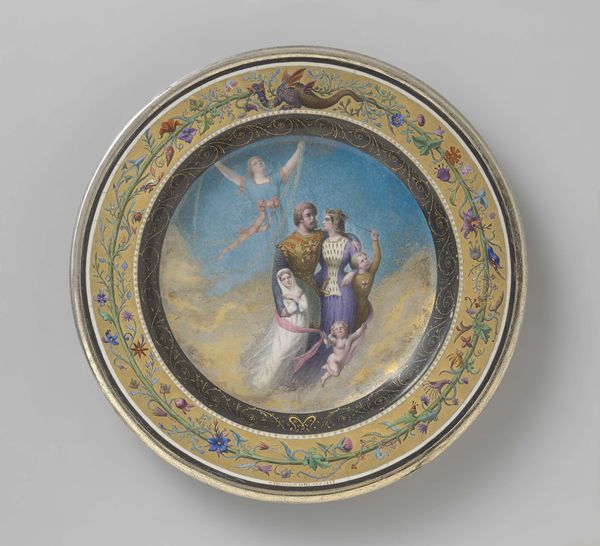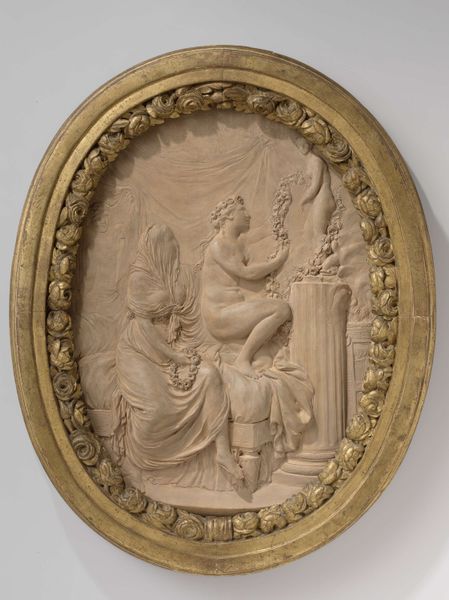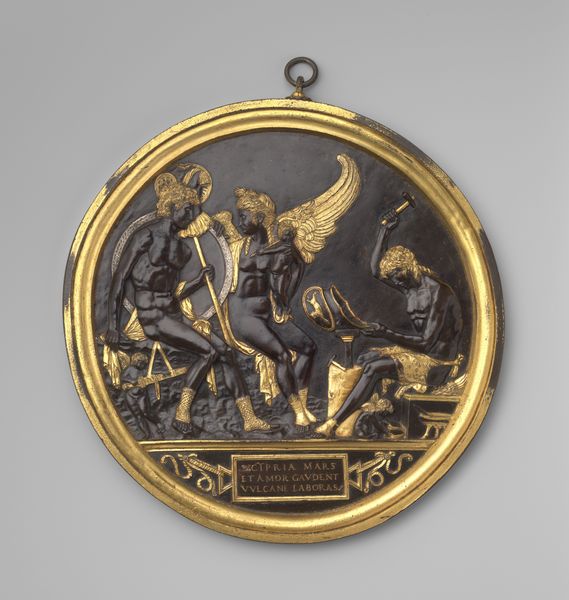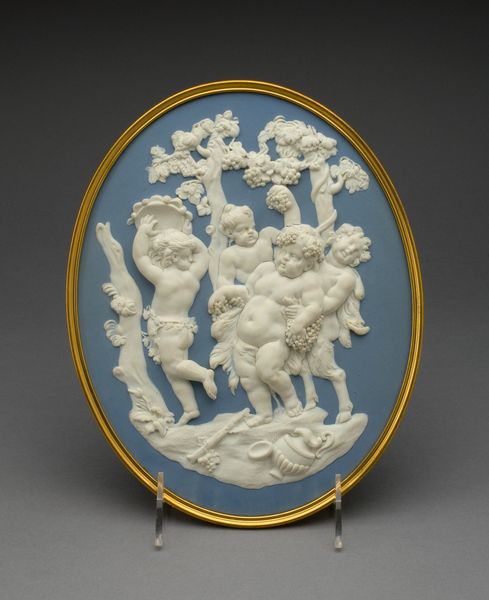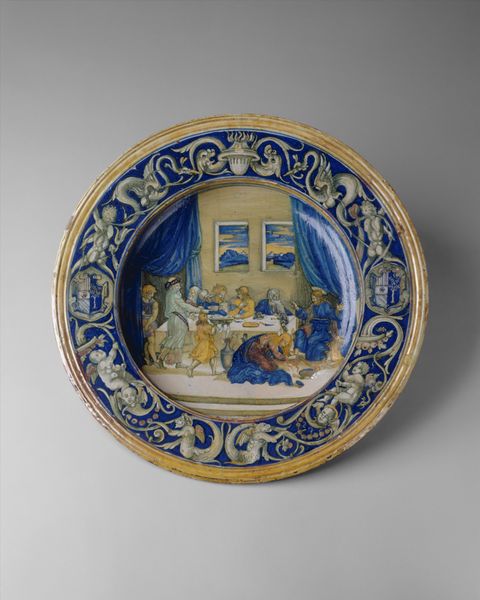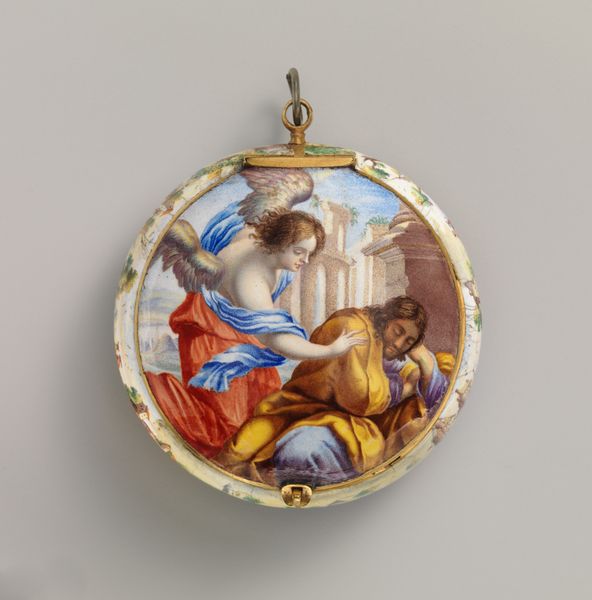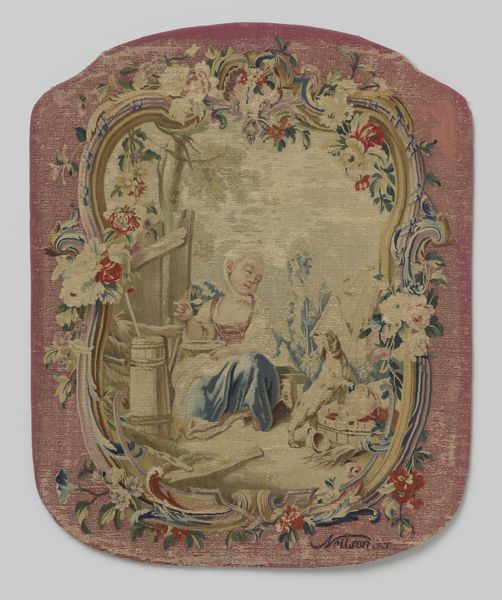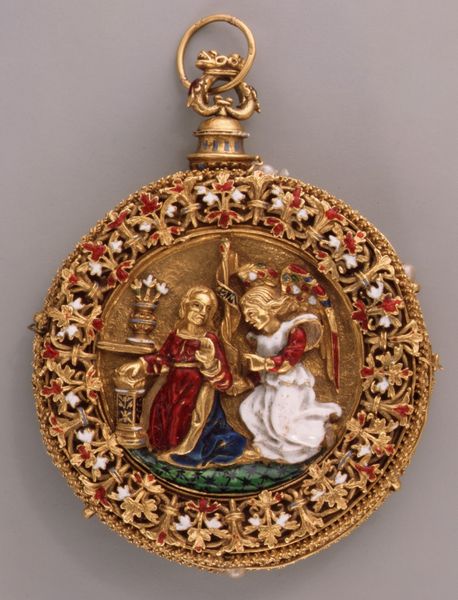
Dimensions: 29 × 23 in. (73.7 × 58.4 cm)
Copyright: Public Domain
Editor: Here we have "The Worship of Cupid" by Jean-Baptiste Huet I, made somewhere between 1770 and 1795. It appears to be a textile work, maybe a tapestry? It's framed ornately. I get a very dreamy, romantic feeling from the piece. What do you see in it? Curator: Beyond its Rococo charm, I see a layering of symbols that speak to a specific understanding of love during that period. Note Cupid, poised to strike. In our collective visual memory, we understand him. Why "worship", though? It elevates romantic love almost to a religious experience, doesn't it? Editor: Yes, it does! Especially with the figure in the flowing dress offering what looks like a floral wreath. Curator: Exactly. Think about the wreaths' associations with ritual offerings in earlier pagan traditions. The artist is consciously drawing a parallel. The dog, nestled nearby, also functions symbolically – representing fidelity, further enriching the cultural script. Huet invites us to consider, perhaps, the cultural expectations projected onto courtship. How durable were they then? Editor: So it is about idealized love rather than a specific story, making it allegorical? Curator: Precisely. Allegory works with universally recognized visual languages. Huet masterfully uses this, tapping into our pre-existing understanding of love’s symbols: roses, the mischievous Cupid, and canine devotion. What might a contemporary artist use as symbols today, I wonder? Editor: That's an interesting thought. Maybe emojis? I see so much more looking closely! Curator: Art opens us to deeper inquiries – ones about memory, society and our shifting visual world. I’m glad to have shared this viewing with you.
Comments
No comments
Be the first to comment and join the conversation on the ultimate creative platform.



